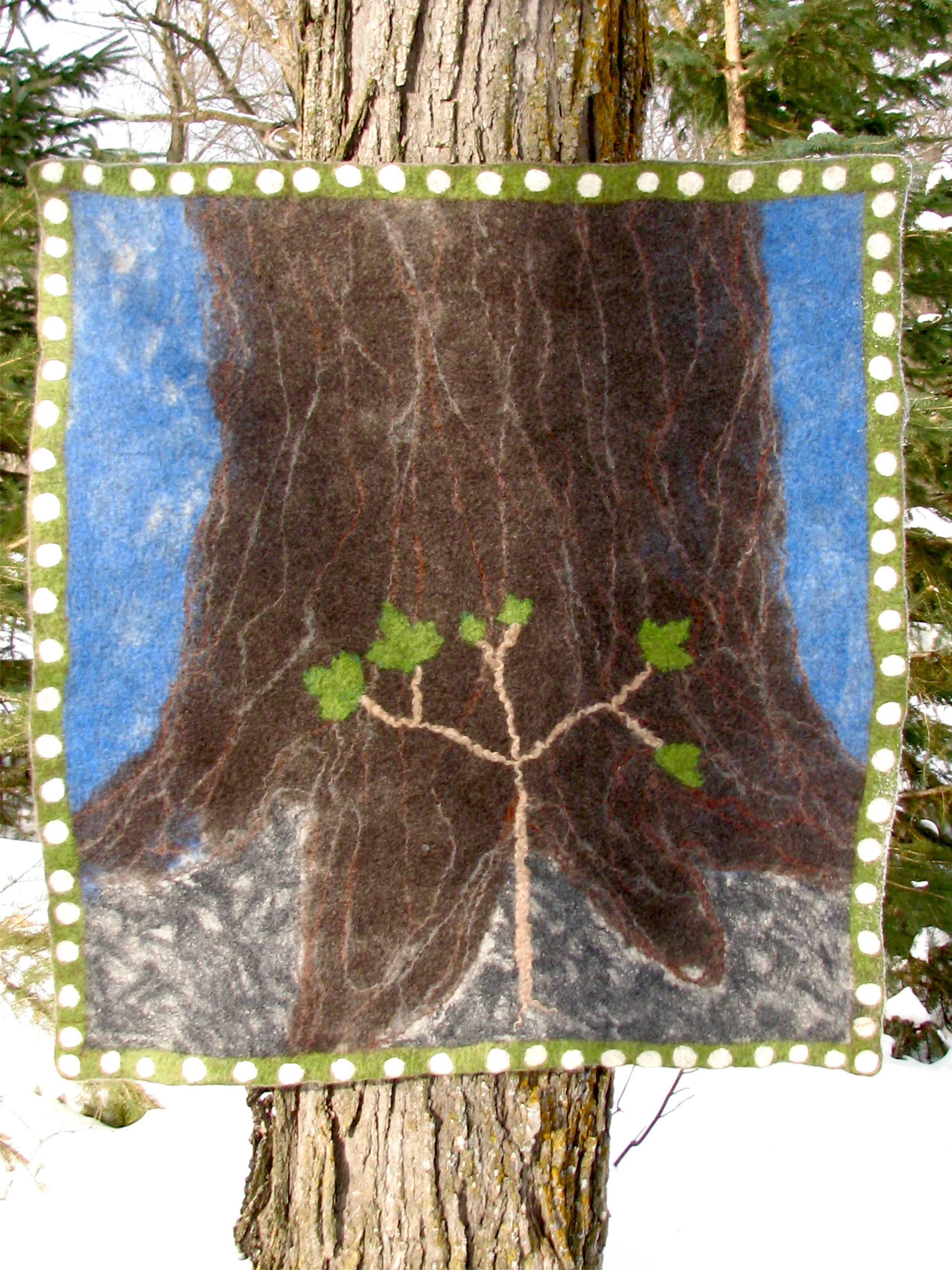
24 Sep “Overstories” – Kristen Anderson merges science and art
Science and art—both are human attempts to understand and describe the world around us. The two disciplines may have different methods, traditions and audiences, but it can be said the goals are fundamentally the same. Wool felt artist Kristen Anderson has merged her interest in both art and science in “Overstories.” Ripple River Gallery near Bay Lake will feature Anderson’s large felt works beginning September 18 and continuing through Sept. 29.
“Art and science have always been intertwined disciplines in my life,” Anderson says, adding that as a college student she took biology notes with pictures to help remember what she was learning; in art classes, she created works related to her studies in biology. “The threads of interest have remained throughout my life as I moved from drawing and painting and into fiber arts.” She inherited a spinning wheel 20 years ago which later led to her first felting course. “Transitions of family and farm life have recently allowed me to venture into my studio for hours at a time each day. The work has evolved into larger bodies of work and a deeper exploration of the scientific world.”
In “Overstories” Anderson tells the stories of old growth forests, specifically “mother” or “hub” trees and their roles in forest resiliency and health. Anderson creates pictorial felt hangings and rugs that are constructed using a traditional wet-felting technique using local and Norwegian pelsull wool. “The felt-making process has become a well-worn companion to me as I work towards mastery in the medium and hone my artistic ‘voice.’ I enjoy imagining imagery that suits the fibrous, tangled, changing nature of wool and I know that many of the subjects I find interesting are wool-like in their organic representation. From the intertwining root hairs to the rough, textured bark, the trees and the felt are quite similar in their shape and nature.”
Anderson, who lives in Big Fork, MN, says her inspiration began with the work of foresters and forestry scientists including Dr. Susan Simard and Peter Wohlleben. Both have written extensively about tree communication through electrochemical pathways that travel slowly in ‘tree time.’ In this way trees also transport nutrients and information throughout their section of the forest.
“Healthy forests are full of amazing connections. These and many other ideas struck a personal chord with me since I live in a community where the forests are a strong part of our identity. From forestry to logging, to tourism, to the view out our windows, the woods are a part of everyday life. Personally, I have a strong connection to an old growth forest near to my home. It is a source of continual renewal and inspiration for me and I pay tribute to it in “Overstories.”.




Sorry, the comment form is closed at this time.